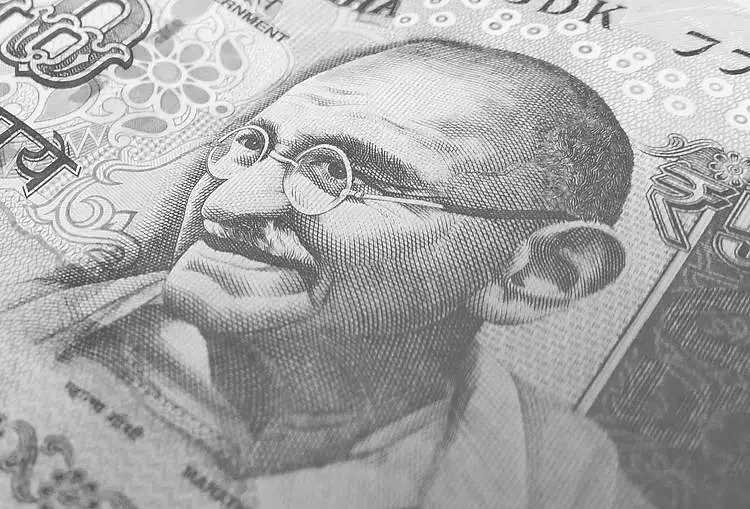As of the latest trading session, the Indian Rupee (INR) is experiencing downward pressure, particularly evident during Friday’s trading in Asia. A combination of factors, including significant outflows of foreign investment and increasing crude oil prices, has contributed to the weakening of India’s national currency. This particular trend highlights the sensitive nature of the Rupee, which is heavily influenced by both local and international economic conditions.
The outflow of over $1.5 billion from Indian equities in November alone, on top of the preceding month’s $11 billion withdrawal, reflects growing concerns among foreign investors regarding the stability of the Indian market. Such capital flight is typically a precursor to broader economic challenges, as sustained investment is crucial for maintaining currency strength and overall economic health.
The financial decisions made by the United States Federal Reserve carry weight worldwide, and the latest indicators suggest a potential shift. Following the Fed’s recent reduction of its benchmark interest rates by 25 basis points, market analysts are observing a notable increase in the likelihood of further rate cuts in December. Fed Chair Jerome Powell has emphasized that while interest rates remain elevated, the central bank is monitoring economic data closely in its pursuit of a more accommodative stance on monetary policy.
The implications for the INR could become pronounced as these global monetary policies directly affect market liquidity and investment patterns. A reduction in the US interest rate typically alters the flow of capital towards emerging markets like India, enhancing foreign investments and possibly leading to a strengthening of the Rupee. However, this is contingent on domestic economic conditions remaining stable, especially when inflation rates hover around critical thresholds.
Despite the current challenges, a report by Emkay suggests that India’s position relative to its Asian counterparts remains relatively favorable, primarily due to its lower reliance on trade with China. This advantage positions India to insulate itself somewhat from broader regional economic shocks, particularly in relation to fluctuating demand from major global economies.
Moreover, the Indian central bank, the Reserve Bank of India (RBI), plays a pivotal role in stabilizing the Rupee through interventions in the foreign exchange markets. By actively managing the INR, the RBI seeks to ensure that the currency remains stable, thereby fostering an environment conducive to trade and investment. The correlation between the Rupee’s strength and the RBI’s interest rate policies is critical; as rates climb, the attractiveness of the Rupee increases, potentially drawing in more foreign capital.
From a technical analysis perspective, the USD/INR pair is currently maintaining a bullish stance, with prices lingering above the critical 100-day Exponential Moving Average (EMA). However, indicators such as the 14-day Relative Strength Index (RSI) hovering near overbought territory (around 75.0) hint at a pending need for consolidation before any potential appreciation of the Rupee against the US dollar.
Future price movements are closely tied to key support and resistance levels. A break above the upper boundary of the prevailing trend channel may lead to upward momentum, potentially approaching significant psychological levels around 85. Conversely, if the Rupee dips below established support levels, selling pressure could intensify, further complicating the already precarious economic environment.
The interplay of various macroeconomic factors is essential in understanding the long-term trajectory of the Indian Rupee. Inflation remains a double-edged sword; a higher inflation rate can erode currency value while simultaneously prompting responses from the RBI in terms of interest rate adjustments. In theory, elevated interest rates can boost the Rupee through increased foreign investment, particularly via the “carry trade” strategy.
However, persistent inflation leads to concerns about cost increases for exports, thereby making Indian goods less competitive abroad. The balance between maintaining healthy inflation levels while attracting foreign direct investment becomes crucial in underpinning the strength of the Rupee. Additionally, changes in trade balances, driven by shifts in both domestic and global markets, further complicate the currency’s performance.
While the Indian Rupee faces challenges driven by a combination of external market forces and internal economic indicators, its resilience is noteworthy. The interaction of various economic elements, including interest rates, inflation rates, and capital flows, creates a complex landscape for forecasting currency performance. Stakeholders in India must remain vigilant to global economic trends as they navigate the intricacies of the currency market—adaptability and strategic foresight will be key in maintaining economic stability and growth.

